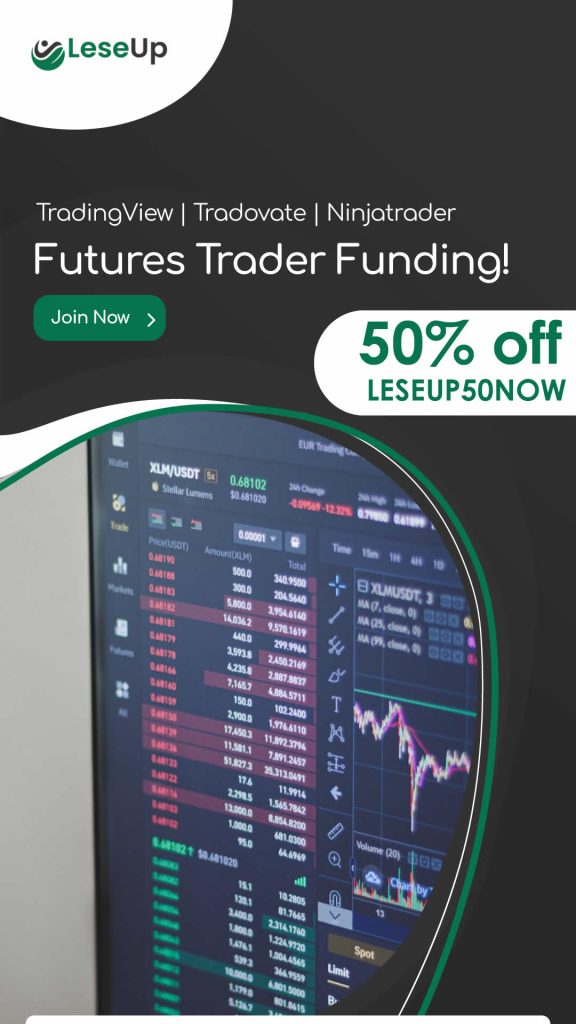Futures trading is set to witness significant transformations in 2023. This article delves deep into a comprehensive analysis of the top 10 Futures Markets to trade in the upcoming year. From sectors like crude oil and gold to bonds and stock indices, we’ll shed light on market dynamics and potential opportunities in these respective areas. Our aim? To arm readers with analytical insights for informed decision-making in the dynamic world of futures trading
Key Takeaways
- Crude oil futures market is influenced by geopolitical and economic factors, as well as oil extraction techniques and OPEC’s influence on global oil production and pricing.
- Gold futures provide an opportunity for hedging against market volatility and are influenced by geopolitical tensions, inflation rates, currency movements, and central bank policies.
- Agricultural futures offer diversification beyond precious metals and are influenced by climate change impacts on agricultural productivity and technology advancements.
- Bond futures are perceived as stable and provide appealing options for risk-averse traders, with effective trading techniques and optimization strategies being crucial for success.
Understanding Futures Trading: A Brief Overview
Futures trading, a complex yet potentially lucrative investment strategy, involves buying and selling contracts for assets (such as commodities, currencies, or securities) at a predetermined price on a specified future date. This concept introduces the necessity of understanding futures terminology and market predictions.
The main terminologies in futures trading include futures contract, which refers to the agreement between two parties to buy or sell an asset at a certain time in the future at a specific price. Another vital term is ‘long position,’ indicating the purchase of an asset with the expectation that its value will rise over time. Conversely, a ‘short position’ implies selling an asset expecting its price will decrease.
Market predictions play a significant role in futures trading. Investors use various analytical tools and strategies to predict market trends accurately. These predictions are primarily based on historical data analysis and economic indicators such as GDP growth rate, inflation rate, and employment figures among others.
A noteworthy point about futures trading is that it provides hedging opportunities against potential losses due to fluctuations in the prices of underlying assets. It also allows investors to speculate on the direction of commodity prices without physically owning them.
The Prominence of Crude Oil Futures in 2023
The prominence of crude oil in 2023 is expected to be significantly influenced by various geopolitical and economic factors. The trade and futures market for this resource will likely be shaped by shifts in global power dynamics, sustainability initiatives, and technological advancements in extraction methods. An understanding of these influences provides significant insights into the projected landscape of the crude oil futures market.
Three key considerations are particularly noteworthy:
- The impact of oil extraction techniques on the environment and economy
- OPEC’s influence on global oil production and pricing
- The role of emerging technologies in shaping future extraction processes
Oil extraction impact refers to both environmental consequences as well as economic implications. As nations strive towards sustainable practices, regulations around traditional extraction methods may tighten, influencing the availability and cost of crude oil.
OPEC’s influence remains a vital determinant in the global crude oil market. This intergovernmental organization has historically controlled a substantial portion of worldwide petroleum reserves, affecting price stability and supply consistency across international markets.
Emerging technologies also hold the potential for drastically altering current extraction processes. Advances such as hydraulic fracturing or ‘fracking’ have already revolutionized industry practices, leading to increased efficiency but also raising ecological concerns.
Gold Futures: A Glittering Opportunity
Gold, as a valuable resource, has always held an essential place in investment portfolios, and its future prospects are set to continue this trend. This precious metal is often viewed as a hedge against market volatility due to its intrinsic value and relative stability during periods of economic uncertainty.
The gold valuation process involves determining the metal’s price based on supply and demand factors in the global market. It is influenced by numerous factors including geopolitical tensions, inflation rates, currency movements, and changes in central bank policies among others. As these elements pose unpredictable variations, they contribute significantly to market volatility.
In the futures markets context, trading gold offers several advantages that attract investors. First among these is the opportunity for leverage where traders can control a large contract with a comparatively small amount of capital. Additionally, futures contracts allow speculation on both rising and falling prices; thus enabling traders to profit from any direction of price movement.
However, it must be noted that while gold presents potentially lucrative opportunities for earnings growth; risks associated with market volatility cannot be overlooked. With an increase in economic instability or fluctuations in currency exchange rates for instance; drastic swings in gold prices may occur leading to potential losses.
Therefore careful risk management strategies – such as proper position sizing or using stop-loss orders – should be employed when participating in gold futures trading. It is also advisable that thorough research into current global events and trends impacting gold valuation be conducted regularly by participants wishing to navigate through this complex arena successfully.
This analysis underscores why gold continues to feature prominently within investment portfolios despite inherent uncertainties presented by market volatility.
Agricultural Futures: A Growing Market
Agricultural commodities, such as corn, wheat, and soybeans, present diverse investment opportunities in economic sectors beyond traditional precious metals like gold. These tangible assets offer an alternative for investors seeking to diversify their portfolios. With factors including Climate Impact and Technology Advancements influencing these markets significantly, understanding these dynamics is vital.
Climate change impacts agricultural productivity directly and indirectly. Changes in precipitation patterns, temperature increases, and more frequent weather extremes create challenges for farmers globally. However, technology advancements have emerged as a solution to some of these challenges. Innovations like precision agriculture technologies help manage resources efficiently while mitigating adverse environmental impacts.
The current rise in commodity prices reflects both of these influences. To illustrate this interplay between climate impact and technology advancements on the profitability of certain commodities, consider the following table:
| Commodity | Climate Impact | Technology Advancement |
|---|---|---|
| Corn | Increased heat stress; altered rainfall | Precision farming; drought-resistant crops |
| Wheat | Changed growing seasons; water scarcity | Pest management tech; improved irrigation systems |
| Soybeans | Shifted geographical suitability | Genetically modified crops; soil health tech |
These examples underscore that agricultural futures are not simply about tracking physical assets but also reflect broader ecological and technological trends shaping global agriculture’s future.
Trading in Bond Futures: A Safe Bet
In the realm of financial investment, bond futures are often perceived as a stable option due to their predictable nature and inherent safeguards against market instability. A deeper exploration into trading techniques can further enhance this stability, providing investors with robust strategies tailored specifically for this type of derivative product.
The factors contributing to bond futures’ stability will be critically analyzed in the ensuing discussion. This analysis will delve into an array of effective trading techniques, thereby equipping participants with crucial insights for optimizing their investments in this domain.
Bond Futures’ Stability
Stability becomes a notable attribute in the bond futures market, demonstrating an appealing factor for risk-averse traders.
The mechanics of this stability are underpinned by two crucial elements: Bond Valuation and Interest Rate Impact.
Bond Valuation encapsulates the present value of bonds’ future cash flows including coupon payments and their face values, thus establishing a benchmark for trading.
Meanwhile, interest rates demonstrate an inverse relation with bond prices; when one rises, the other falls. This dynamic creates opportunities for hedging against potential risks associated with fluctuating interest rates in the broader financial landscape.
Consequently, understanding these dynamics can provide traders with insights into market trends and potentials for profit or loss while maintaining an investment’s overall stability within the volatile realm of futures trading.
Trading Techniques Exploration
Exploration of trading techniques provides invaluable insights into strategic decision-making processes within the realm of bond investment. This includes timing strategies, diversification, and risk management.
Algorithmic Trading has surged in popularity due to its ability to execute orders significantly faster than human traders while limiting emotional biases. This technique is especially potent during periods of heightened market volatility, where rapid responses can prevent substantial losses or secure unexpected gains. However, it must be noted that algorithmic trading introduces new risks such as system failure or coding errors.
Diversification represents another critical strategy by spreading investments across a variety of assets to reduce potential risks and ensure consistent returns even under unpredictable market conditions.
The Rise of Cryptocurrency Futures in 2023
The rise of cryptocurrency futures in 2023 signifies a marked shift towards digital assets in the global trading landscape. The advent of this trend is primarily fueled by two factors: the impact of crypto regulation and the influence of blockchain technology.
Notably, crypto regulation impacts have been pivotal in shaping the trajectory of cryptocurrency futures. Regulatory bodies worldwide have gradually shifted from stringent opposition to cautious acceptance, meticulously crafting frameworks for governing these novel financial instruments. This regulatory evolution has subsequently catalyzed institutional adoption, as it provides legal certainty and market transparency.
Moreover, blockchain technology’s influence is discernible in the operational mechanics of cryptocurrency futures markets. Blockchain’s inherent attributes such as decentralization, immutability, and transparency facilitate secure transactions and mitigate counterparty risk—a perennial challenge in traditional futures trading—thereby rendering cryptocurrencies an attractive asset class for derivatives trading.
However, there are distinct challenges accompanying this transition. Volatility remains a fundamental concern with cryptocurrencies potentially leading to substantial losses or profits within short timeframes. Additionally, there exist operational risks associated with nascent technologies like blockchain which necessitates robust risk management strategies.
Nonetheless, despite these challenges, given the continued maturation of regulatory frameworks and technological advancements improving transactional security and efficiency—it can be projected that cryptocurrency futures will continue to gain traction as a viable asset class within global futures markets moving forward.
Stock Index Futures: A Look at the Prospects
The exploration of the complex construct of stock index futures necessitates a comprehensive understanding of their operational mechanism and underlying principles.
The prospects for 2023 offer an intriguing area of study, given the potential shifts in economic landscapes and market dynamics.
Coupled with this analysis is a critical evaluation of the associated risks and rewards, providing an insightful perspective into the potential return on investment and financial implications therein.
Understanding Stock Index Futures
Understanding Stock Index Futures requires a comprehensive grasp of how these financial derivatives are used to speculate on the direction of a specific index, such as the S&P 500 or Dow Jones.
Key concepts include Index Calculation Methods and Leveraged Futures Trading. The former refers to the mathematical computation used in determining the value of an index, which is typically a weighted average of the prices of its constituent stocks.
Leveraged futures trading, on the other hand, allows investors to control large amounts of assets with relatively small amounts of capital. This amplifies potential gains but also magnifies losses if market movements are unfavorable.
Therefore, comprehension and strategic application are crucial for successful navigation within this complex arena.
Prospects for 2023
Prospects for 2023 will be shaped by several factors, including global economic conditions, monetary policy decisions, and technological advancements. The Market Predictions for that year will largely depend on these factors and their interactions.
- Global Economic Conditions: These will have a significant impact on market outcomes. For instance, robust growth in major economies could stimulate demand for commodities and equities.
- Monetary Policy Decisions: Central banks’ moves can affect markets profoundly. An increase in interest rates may reduce the attractiveness of riskier assets like equities.
- Technological Advancements: Innovations may disrupt established industries and create new investment opportunities.
Understanding these elements can provide insights into the potential Economic Impact of future market changes, aiding traders in making informed decisions about futures trading in 2023.
Risks and Rewards
Assessing risks and rewards requires a comprehensive analysis of potential effects on investments, which can be influenced by several factors such as market volatility, economic indices, and regulatory changes.
Implementing Risk Diversification strategies is crucial in mitigating these uncertainties. This approach ensures the dispersion of investment across various markets to reduce exposure to a single asset’s potential failure.
While this strategy helps in limiting losses, it also paves the way for Reward Maximization. By investing in diverse futures markets with different risk levels and growth potentials, an investor can exploit high-reward opportunities while maintaining a safety net against possible downturns.
Therefore, achieving an optimal balance between risk diversification and reward maximization is key in navigating the futures markets successfully in 2023.
Currency Futures: A Global Trading Arena
Currency futures represent a significant portion of the global trading market, offering diverse opportunities for investment and speculation. They are contracts that stipulate the price at which a specified currency can be bought or sold at a future date. They provide investors with an instrument to hedge against foreign exchange risk or speculate on potential forex movements.
Forex predictions play a critical role in the trading of currency futures. Traders utilize various forecasting models based on historical data, economic indicators, market sentiment, and geopolitical events to predict future currency prices. Such predictive models aid traders in formulating strategic decisions about buying or selling futures contracts.
The dynamics of global economics significantly influence currency futures markets. Economic factors such as inflation rates, interest rates, political stability, and the economic performance of individual countries directly impact the value of their respective currencies. For instance, if economic indicators project robust growth for a particular country’s economy, its currency might appreciate against other currencies leading to upward movement in its future contracts.
Furthermore, macroeconomic reports like Gross Domestic Product (GDP) figures and employment statistics from influential economies such as the United States or European Union often cause substantial fluctuations in forex markets due to their weight in global trade and finance.
Energy Futures: An Electrifying Prospect for 2023
Energy futures, particularly for the year 2023, present an electrifying prospect due to the ongoing global shift towards renewable and sustainable energy sources. This transition is driving a major transformation in energy markets worldwide. The increasing demand for clean power has given rise to a robust market dedicated specifically to renewable energy futures.
Renewable energy futures are derivatives contracts based on underlying assets such as wind power, solar energy, hydroelectricity, and bioenergy. Market participants trade these futures contracts with expectations of future price movements of these renewable resources. The rising interest in these commodities indicates their potential as lucrative investment options in upcoming years.
Market volatility impact plays a significant role in shaping the trends in this sector. Fluctuations in oil prices have traditionally been the primary driver of volatility in global energy markets. However, with the growing emphasis on climate change mitigation and sustainability goals, diverse factors now influence market dynamics.
Changes to government policies concerning renewable energy adoption, and technological advancements that enhance efficiency or decrease costs of renewables-based methods of power generation are examples of such variables influencing market volatility. Furthermore, issues related to grid infrastructure compatibility or storage capacity for certain types of renewable energies can similarly affect market conditions.
Final Thoughts: Maximizing Your Futures Trading in 2023
In the realm of futures trading, an examination of trading strategies optimization, and risk management techniques is critical to maximizing potential returns in 2023.
Detailed analysis and optimization of various strategies can enhance the trader’s understanding of market dynamics, leading to improved decision-making processes.
Furthermore, the incorporation of robust risk management methods not only mitigates potential losses but also ensures sustainability and stability in a highly volatile market environment.
Trading Strategies Optimization
Optimization of trading strategies in the top 10 futures markets for 2023 necessitates a comprehensive understanding of market trends, risk management, and investment objectives. This process involves leveraging algorithmic trading to exploit market volatility and maximize returns. Algorithmic trading offers precision, speed, and reduced cost of transactions; however, it is not without risks.
| Strategy | Benefit | Risk |
|---|---|---|
| Algorithmic Trading | Precision & Speed | System Failure |
| Trend Following | Profit in Up/Down Markets | False Signals |
| Risk Management | Prevents Massive Losses | Missed Opportunities |
Understanding these strategies’ benefits and associated risks can help optimize their application. In conclusion, while no strategy guarantees success in any market condition, an optimized approach that blends various tactics while mitigating risks can significantly enhance performance in the top 10 futures markets for 2023.
Risk Management Techniques
Adopting robust risk management techniques, such as diversification and hedging, is crucial in mitigating potential losses during volatile market conditions. Leveraging derivatives serves as a key technique for controlling risks associated with future price uncertainty. These financial instruments allow parties to lock in prices today for future transactions, providing a hedge against adverse price movements.
However, derivatives also introduce counterparty risks – the possibility that one party will fail to fulfill their contractual obligations. To manage this risk, it’s prudent to conduct thorough counterparty credit assessments before entering into derivative contracts. This ensures that even if the market swings unfavorably, the impact on one’s investment portfolio remains within acceptable limits.
It demonstrates how the strategic application of these techniques can reduce potential losses while enhancing overall portfolio performance.
Frequently Asked Questions
How Can One Get Started in Futures Trading as a Beginner?
Starting in futures trading requires a careful selection of brokers and a thorough understanding of leverage.
Firstly, one should research and opt for reputable brokers offering comprehensive services suitable for beginners.
Next, it is crucial to comprehend the concept of leverage – the use of borrowed capital to increase potential returns on investment.
Adequate knowledge regarding these aspects can lead to informed decisions, mitigating risks associated with futures trading.
What Are the Common Risks Associated With Each Type of Futures Market?
Common risks in futures markets include:
- Price volatility
- Liquidity risk
- Potential default on contract obligations
Each type of market carries specific hazards related to its underlying asset’s characteristics and fluctuations. Understanding contract specifications is crucial for risk mitigation, as it provides insights into the product’s behavior under different market conditions.
Detailed knowledge of these elements can significantly reduce potential losses and enhance trading performance in various future markets.
Are There Any Specific Tools or Software Needed for Trading in Futures Markets?
In futures trading, specific tools and software are indeed required. The choice of these resources depends largely on individual needs and preferences.
A comprehensive evaluation of available software for futures trading is crucial to ensure efficient market analysis, trade execution, and risk management.
Additionally, the role of artificial intelligence in futures markets has become increasingly prominent, offering advanced predictive analytics and automated decision-making capabilities that can significantly enhance trading effectiveness.
What Are Some Strategies to Protect Investments in Volatile Futures Markets?
Investment protection strategies in volatile futures markets include employing hedging techniques and volatility management.
Hedging, such as with options, can limit potential losses by offsetting price fluctuations.
Volatility management involves monitoring market trends and adjusting positions accordingly.
These strategies require detailed analysis of underlying assets’ behavior to predict future movements accurately; hence, they necessitate a comprehensive understanding of financial market dynamics.
How Has the Covid-19 Pandemic Affected the Futures Markets and What Might Be Its Long-Term Impact?
The COVID-19 pandemic has significantly impacted futures markets, leading to unprecedented volatility. This Pandemic’s Market Influence has manifested through supply chain disruptions, shifts in consumer behavior, and fluctuations in commodity prices.
The Post COVID Trading Landscape may continue to experience these effects as markets adjust to new economic realities. Long-term impacts could include increased market uncertainty, necessitating more robust risk management strategies for futures trading.
Final Insights: Navigating Futures Trading in 2023
The futures markets offer a vast spectrum of trading avenues. From sectors like crude oil and gold to the realms of bonds and stock indices, opportunities abound. As traders, harnessing the power of market trends and deploying tailored strategies for each sector is paramount. With a keen understanding and strategic approach, success in futures trading for 2023 is within reach





